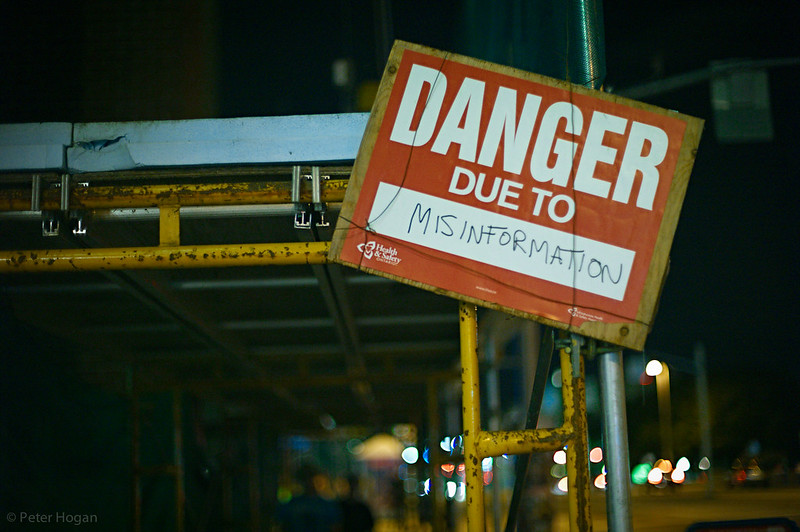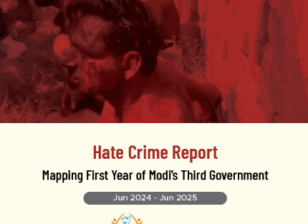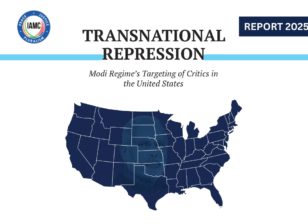Misinformation and Violence
The link between misinformation and violence needs to be addressed by legacy media, new media platforms, civil society, and regulatory bodies.
By Rohit Chopra
I write this two months after the successful conclusion of the Dismantling Global Hindutva (DGH) conference, a three-day US-based academic initiative held from September 10-12, 2021 and sponsored by over 50 universities. I was one of the many organizers of the conference.
Hindutva is an ethnonationalist political ideology whose core idea is that India belongs only to Hindus and that Indian religious minorities, especially Muslims and Christians, are outsiders who can never truly be Indian citizens. Since the 1980s, Hindutva has grown into a vast international enterprise, involving a complex transnational network of organizations that engage in fundraising, cultural outreach, political lobbying, and the promotion of its model of Indian identity. The global visibility and reach of Hindutva have dramatically increased over the last decade, with the ascendancy of Narendra Modi to the post of Indian Prime Minister.
From the moment the conference was announced in late August 2021, it was subjected to a well-orchestrated campaign of misinformation and a barrage of abuse aimed at the organizers and speakers, including threats of sexual violence, misogynist slurs, and degrading language targeting caste and religious minorities.
There were three streams of misinformation aimed at the conference. Each of these, in its own distinct manner, contributed to a frenzy of rage and outrage directed at the event. The threats followed.
The first stream of misinformation emanated from online campaigns by US-based Hindu rightwing organizations demanding that US universities withdraw their support for the conference. At the heart of such campaigns, such as the one run by the Hindu American Foundation (HAF), was the malicious claim that the DGH conference was Hinduphobic—a demeaning accusation to hurl at scholars who have spent years, decades, and a lifetime studying Hindutva as well as aspects of Hindu, Indian, and South Asian society.
The second stream of misinformation flowed from the Indian mainstream media. In advance of his show on the conference, the editor-in-chief of the Times Now television channel announced on Twitter that the conference was essentially a gathering of “Marxists-Leftists-Muslims,” clubbing together the perceived enemies of the Hindu Right. Firstpost, an Indian online publication, declared that the conference was a political plot to malign Hindus.
Consisting of a surreal mix of conspiracies and abuse, the third stream of misinformation spewed forth largely from social media, though some of it also turned up in email inboxes. The more bizarre theories here identified ISI or the Pakistani Intelligence Services, George Soros, radical Islamists, and ‘anti-India cartels’ as the forces behind the conference. It would be easy to laugh at such statements if they were not mixed in with jingoistic calls for a ‘strong’ Hindu reply to the conference organizers—a code for violence.
The alarming relationship between misinformation and violence has repeatedly manifested itself in numerous contexts, including the US, India, and Brazil. In the US, the epidemic of misinformation about vaccines and COVID-19 has placed doctors, teachers, frontline workers, airline attendants, and government officials at serious risk of harm. The key role played in the January 6, 2021 US Capitol riots by members of QAnon and those who believed the 2020 US election was stolen is well known. In India, rumors of child abductors circulating on WhatsApp led to several mob lynchings in 2018.
Establishing a direct causal link between misinformation and violence is generally challenging. The connection is obvious when it comes to examples of hate speech, statements that directly call for violence, or put a target on someone’s back. The relationship is more insidious with regard to a sophisticated piece of propaganda or a steady stream of misinformation that cumulatively contributes to a maelstrom of paranoia, conspiracies, and accusations against individuals or groups.
The situation becomes more complicated when it comes to the online realm. In general, as an article from Poynter notes, the definition of misinformation is fuzzy and countries across the globe seem to be struggling to figure out the right approach to deal with it, especially with regard to the epidemic of fake news online. Yet, we know that media content does have an effect in contributing to a climate where acts violence against a particular groups become thinkable, legitimate, and even desirable.
A case in point is D.W. Griffith’s 1915 Birth of a Nation, which marked a revolution in film-making yet also stands as a singularly racist example of cultural expression. The film, watched by several million people, portrayed a narrative of anti-black violence as self-defense and heroism. As scholars have pointed out, in doing so it legitimized and, in fact, rejuvenated the Klan. It is not hard to see parallels with online misinformation, despite its generally low intellectual and aesthetic quality which stands in contrast with the technical accomplishments of Griffith’s film.
The scholar Cass Sunstein terms the phenomenon of the quick, viral, and amplifying spread of information online as a “cybercascade.” Sunstein notes that such cyberscascades may be “reputational”—targetting individuals—or “informational”—typically involving sensationalist news, rumors, or false information. My experience as an organizer of the Dismantling Global Hindutva conference was that the global Hindu Right was able to effectively trigger exactly such cybercascades, both informational and reputational, through the various streams of misinformation identified earlier in this reflection.
Hindu far right channels in India and the US spewed death and rape threats against conference speakers and organizations. In the US, organizations like the Hindu American Foundation fanned the fire well before the start of the event by conjuring the bogeyman of Hinduphobia and raising unfounded alarmist cries about how the conference would result in the targeting of Hindu students on American campuses. They continued their mission of spreading misinformation in the aftermath of the conference, through selectively highlighting edited clips of speakers’ talks from conference sessions posted on YouTube, and then outraging about them on Twitter. Such conveniently manipulated out-of-context statements attributed to conference speakers predictably fed the trolls, politicians, television anchors, and opportunistic celebrities who had been rallying against conference participants and organizers for weeks.
Threats of death and assault and the relentless hounding and harrassment of academics (or, for that matter, anyone) online are clearly unethical and, in many cases, even illegal actions. While it is not clear if dog-whistling, whipping up outrage to agitate online mobs, and inaccurately imputing sentiments to someone through plucking a sentence or two out of context are necessarily always illegal acts (though they may well be in some cases), they are indisputably and undeniably unethical deeds given the severe harms that they can cause to individuals, groups, and civic, democratic life at large.
My experience and that of my colleagues involved in the conference was unfortunately not an exception. The use of the internet and social media for such ends echoes, on a smaller scale, the now-extensively documented role of Facebook in contributing to anti-minority violence in several societies, including Myanmar, Sri Lanka, and India. Too many individuals and groups routinely and regularly face the twin threats of misinformation and violence that emanate from online spaces as well as the general economy of the global circulation of knowledge. This link between misinformation and violence needs to be seriously addressed by legacy media and new media platforms, civil society, as well as regulatory bodies. If so-called Big Tech platforms are committed to the ethical principles they purport to uphold, and if we want to live in societies, whether, local national, or global, that value people over profit as a fundamental ethical imperative, such action is of the utmost urgency. Till then, misinformation will continue to place academics, journalists, minorities, vulnerable groups, or anyone expressing unpopular opinions in a position of ominous precarity.
This article first appeared in scu.edu




